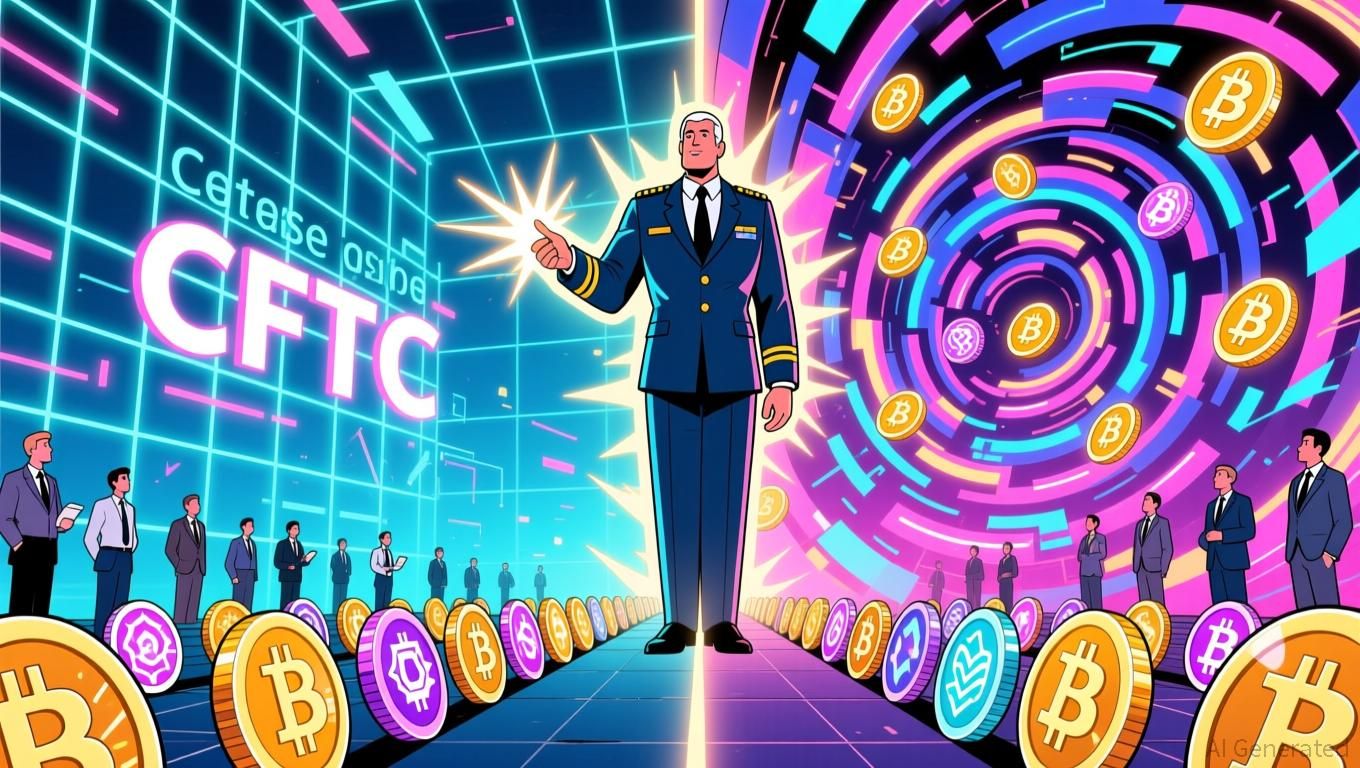AAVE Rises 8.63% Over the Past Week: DeFi Buyback Momentum and Treasury Advancements
- Aave's $50M annual buyback program shifts DeFi tokenomics toward deflation, redirecting protocol earnings to reduce $AAVE supply. - The 7-day 8.63% price surge reflects growing adoption of buyback strategies by DeFi platforms like EtherFi and Maple Finance. - BTCS Inc. leverages Aave's 24/7 automated lending to cut borrowing costs by 5-6% while expanding Ethereum holdings through DAT strategy. - Analysts predict deflationary models will enhance price resilience, with metrics like protocol revenue replaci
As of November 9, 2025,
AAVE, recognized as a top decentralized lending protocol, is undergoing a significant transformation as it adopts deflationary tokenomics, a trend gaining momentum in DeFi. After announcing a $50 million yearly buyback plan, the Aave governance community approved a major change in how revenue is distributed, allocating part of the protocol’s income to repurchasing tokens on the open market. This represents a notable shift away from the inflationary approaches that previously prevailed in the sector, highlighting a more mature approach to DeFi governance and economic planning. By reducing the available supply of $AAVE, the protocol aims to enhance long-term value for holders and better align incentives with ongoing network development and engagement.
This buyback strategy is part of a larger movement that is reshaping DeFi, with platforms such as EtherFi,
Aave’s impact goes beyond its buyback program. BTCS Inc., a company listed on Nasdaq, has made Aave a key part of its Digital Asset Treasury (DAT) strategy, using the platform to manage liquidity and grow its
AAVE now exemplifies the broader shift among DeFi protocols from speculative expansion to models focused on profit-sharing and creating token scarcity. Experts believe these foundational changes will help stabilize prices during market swings and strengthen long-term value for investors. This evolution is also influencing how DeFi tokens are assessed, with greater emphasis now placed on metrics like protocol revenue and actual yield rather than purely speculative growth figures.
Backtest Hypothesis
To assess how effective the recent buyback trend might be, one could run a backtest analyzing Aave’s historical price reactions to similar market events. For example, an event-driven backtest could look for occasions when Aave’s price dropped by a set percentage—such as 10%—and then measure the average price movement in the days that followed. The underlying idea is that deflationary actions like buybacks could help establish a price floor and support quicker recoveries. This would involve defining which tokens to include (e.g., AAVE), setting the event parameters (e.g., a 10% daily drop), and outlining the response (e.g., purchasing at the next day’s open and holding for five days). By applying clear guidelines and limitations, such a backtest could offer data-driven evidence on whether Aave’s deflationary approach has historically contributed to price stability and rebounds.
Disclaimer: The content of this article solely reflects the author's opinion and does not represent the platform in any capacity. This article is not intended to serve as a reference for making investment decisions.
You may also like
XRP News Update: XRP ETFs Confront Downtrend While Key Support Levels Face Pressure
- XRP faces downward pressure near $2.27 amid $15.5M institutional outflows and declining futures open interest ($3.61B), signaling waning speculative interest. - Four XRP ETFs launching this week, including Canary Capital's $58M-volume XRPC , could drive $4B-$8B in inflows to counter recent outflows and stabilize pricing. - Technical indicators show XRP trading below key EMAs ($2.49/2.56) with fragile $2.20 support level repeatedly tested, while RSI (43) and bearish MACD confirm short-term selling pressur

Regulated or Decentralized: Kalshi’s $11 Billion Boom Sparks a Prediction Market Frenzy
- Kalshi's valuation jumped to $11B after a $1B funding round led by Sequoia and CapitalG, doubling from October 2025. - The CFTC-regulated platform competes with decentralized rival Polymarket, which targets $12B-$15B in its next funding. - Kalshi dominates 61.4% of prediction market trading volume, boosted by NYC election accuracy and subway ad campaigns. - Partnerships with Google Finance, Robinhood , and Barchart expand Kalshi's reach, contrasting Polymarket's crypto-centric innovations. - The $17.4B+

Bitcoin’s Sharp Decline: Causes Behind the Fall and Future Outlook
- Bitcoin fell below $100,000 in Nov 2025 due to macroeconomic shifts, regulatory ambiguity, and ETF outflows. - SEC's reduced crypto enforcement and Trump-era tariffs created uncertainty, while Treasury volatility and supply chain disruptions pressured risk assets. - BlackRock's IBIT ETF saw record outflows, contrasting with Abu Dhabi's tripled stake, as technical indicators showed oversold conditions and bearish momentum. - Experts remain divided: MSTR predicts $150k by year-end, but prediction markets s
Senate Crypto Legislation Transfers Oversight to CFTC Amid Rising Partisan Debate
- U.S. Senate proposes bipartisan bill transferring crypto regulation to CFTC, limiting SEC's role and classifying most cryptocurrencies as commodities. - Trump's CFTC nominee Selig faces scrutiny over agency staffing and bipartisan governance, with Democrats warning of political bias risks under single Republican leadership. - Industry supports CFTC's expanded oversight for regulatory clarity, but critics question its capacity to enforce AML standards and manage crypto market growth. - Finalized framework
